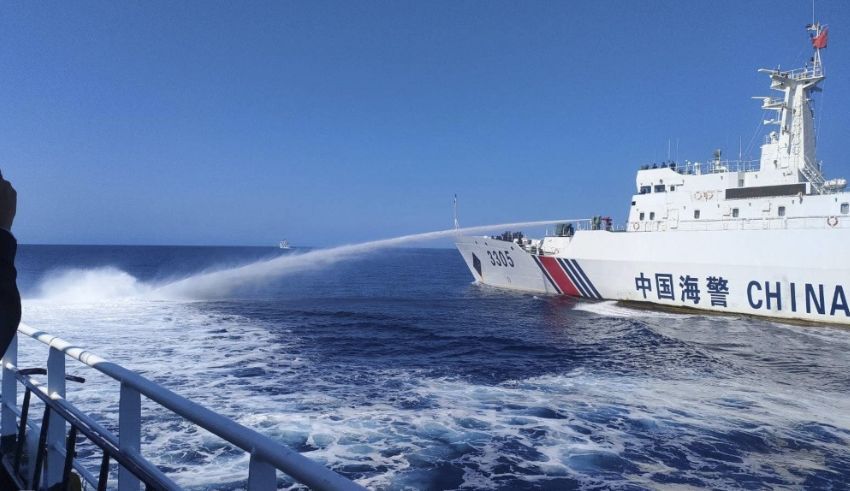
China has a lot of legal weapons to challenge Manila’s claims in the South China Sea, according to an international law expert who spoke at a webinar hosted by the Chinese University of Hong Kong on Tuesday.
The expert, Professor Bing Ling, said that China could use various legal arguments and strategies to counter the 2016 arbitration ruling that invalidated most of its claims in the disputed waters, and to assert its sovereignty and rights over the islands and the resources in the area¹.
What are China’s legal weapons?
Professor Ling, who is the director of the Centre for Chinese Law at the university, said that China’s legal weapons include:
- Rejecting the jurisdiction and the validity of the arbitration tribunal, which China claims was biased and unlawful, and which China did not participate in or accept its ruling.
- Invoking the doctrine of historic rights, which China claims gives it the right to exercise sovereignty and jurisdiction over the waters within the nine-dash line, based on its long and continuous presence and practice in the area.
- Citing the principle of acquiescence, which China claims means that the Philippines and other claimants have implicitly recognized and accepted China’s claims and actions in the area, by not protesting or objecting to them for a long time.
- Relying on the principle of effectiveness, which China claims means that it has effectively occupied and administered the islands and the features in the area, and has exercised its authority and control over them.
- Referring to the principle of equity, which China claims means that it should be entitled to a fair and reasonable share of the maritime zones and the resources in the area, taking into account its geographical, historical, and economic factors.
Keep Reading
How will China use these legal weapons?
Professor Ling said that China could use these legal weapons to challenge Manila’s claims in the South China Sea in various ways, such as:
- Negotiating and concluding bilateral or multilateral agreements with the Philippines and other claimants, which could recognize and accommodate China’s claims and interests, and which could exclude or limit the application of the arbitration ruling.
- Initiating and participating in alternative dispute settlement mechanisms, such as mediation, conciliation, or joint development, which could provide more flexible and pragmatic solutions, and which could avoid or defer the contentious issues of sovereignty and jurisdiction.
- Proposing and implementing cooperative and confidence-building measures, such as joint patrols, joint research, joint fisheries, or joint conservation, which could enhance mutual trust and understanding, and which could reduce the risks of conflict and confrontation.
- Asserting and defending its claims and rights through diplomatic and legal actions, such as protests, statements, notes verbales, or lawsuits, which could challenge and counter the claims and actions of the Philippines and other parties, and which could seek to uphold and enforce the arbitration ruling.
China’s legal weapons, therefore, are a powerful and diverse arsenal that China could use to challenge Manila’s claims in the South China Sea, and to pursue its own claims and interests in the area.
China’s legal weapons, however, are not without limitations and challenges, as they could face legal, political, and practical obstacles, and as they could have implications for the regional and international order and stability. China’s legal weapons, therefore, should be used with caution and responsibility, and with respect for the rule of law and the peaceful settlement of disputes.




